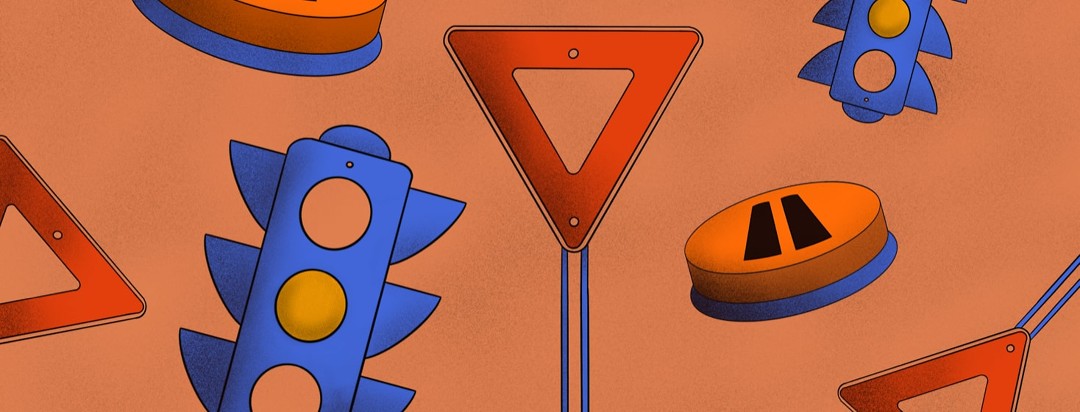Red Light/Green Light: The Intersection of a Migraine Attack
There are times that life demands we keep going despite migraine. And there are times that migraine demands that we stop despite life. That dichotomy brings forth an ultimate question we migraineurs face, day after day: Should we keep going, slow down, or stop in our tracks given the level of pain we’re in? When you’re sitting at the migraine intersection - with an attack coming on - do you go forth, proceed with caution, or stop entirely?
Red light
Our doctors tell us we’ll have the best chance of turning an attack around if we treat it early. For most of us, popping a rescue medication or employing a self-care technique at the first sign is a smart move – but many of us also choose to clear the decks and find a quiet place to let that medication or technique do its job.
Stopping everything
PTSD from previous brushes with severe attacks may lead us toward pulling the curtains closed quickly when pain arises. We stop everything until the pain dissipates. When we take this approach it can show we are respecting the fact that we live with migraine, however, it can also make us feel a bit victimized by the condition and that migraine is controlling our lives.
Green light
Others of us respond to attacks by continuing forth. Perhaps because stopping isn’t always realistic, or because we have a different take on life with migraine. We don’t want to stop everything because we don’t want to let the pain win.
Pushing through the pain of migraine
So, we push ourselves. We push against the pain and squint our eyes to see despite the glaring lights. We act as though we can follow conversations that make no sense because our brains aren’t firing on all cylinders. We may even politely excuse ourselves and vomit in the bathroom before returning to the required situation. We “tough” it out. While we may believe this to be a strong way to respond to migraine, most of us know that this approach generally leads to an eventual collapse. Migraine often does ultimately demand a dark and quiet stillness to resolve itself.
Yellow light
Proceeding with caution when presented with an attack can definitely be the Goldilocks “just right” response. It’s one in which we treat the condition early and proceed with plans while treading with great care, ready to stop as needed.
Proceeding with caution
However, to me, the symbol of a yellow light is less about the idea of slowing down (though I applaud this middle-of-the-road technique) and more about learning to manage and incorporate the condition of migraine into our lives on a global level. It has to do with coming to accept that:
- Migraine is but one part of who we are; rather than WHO we are;
- We are living with a condition that prohibits us from being able to do it all.
This fact is not a matter of opinion or choice; not a matter of strength or weakness; and, not a matter of fault. It’s a simple matter of fact.
Finding middle ground
Rather than reacting in the extreme - stopping completely, or storming ahead, we find a middle ground in which we come to accept that pain may likely be a part of more days than not. So on we go; evaluating each day and each attack on an individual basis. Respecting the condition and the process. Some days we may be able to continue on and others we may not. No matter the route we take, we learn to apply compassion and release judgment as we go. We become less focused on the intersection and raise our gaze to the journey; open to the wisdom we are gaining along the way.
How do you proceed at the migraine intersection? Red light, green light or yellow light? Tell us in the comment section below so we can learn from the wisdom you have gained in your migraine journey.

Join the conversation